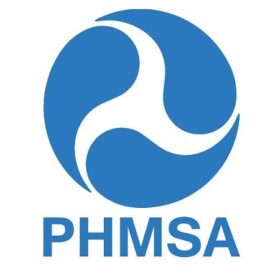The American Gas Association (AGA), the Association of Oil Pipe Lines (AOPL), the American Petroleum Institute (API), the Interstate Natural Gas Association of America (INGAA) and GPA Midstream Association (GPA) jointly submit these comments in response to the Department of Commerce (“Commerce”) Notice and Request for Comments entitled, “Construction of Pipelines Using Domestic Steel and Iron” (“Notice”). The trade associations (“Associations”) filing these comments represent the vast majority of pipeline operators engaged in transporting natural gas, natural gas liquids, crude oil, refined petroleum products, and carbon dioxide. The Associations appreciate the opportunity to provide information and comment as Commerce develops the plan directed by the Presidential Memorandum on Construction of American Pipelines.
Growth in domestic natural gas and oil production fuels America’s economy, and pipelines are the critical link that brings these domestic energy resources to market. In addition to the hundreds of thousands of jobs supported by the energy production and pipeline sector, domestic energy abundance has driven a resurgence of our manufacturing sector and the broader U.S. economy. The energy delivered by America’s pipelines powers domestic industry and serves as the feedstock used in a variety of manufacturing processes, from petrochemicals (paints, plastics, makeup) to fertilizer. In connection with the Presidential Memorandum, it is noteworthy that steel mills use natural gas delivered via pipeline to melt and form steel.
In 2014, 500,000 miles of liquid and natural gas transmission pipelines lines transported 16.2 billion barrels of crude oil and petroleum products and 27.3 trillion cubic feet of natural gas at a safety rate of 99.99 percent. Local distribution companies delivered natural gas through over 2 million miles of pipelines, and gathering system operators collected crude oil and natural gas through over 300,000 miles of pipelines. As part of the Trump administration’s broader energy policy and infrastructure plan, new and existing pipelines will play a critical role in connecting growing production and consumer demand.
The Associations support President Trump’s objective to grow domestic jobs and boost the U.S. economy by reinvigorating American manufacturing. Members of the Associations already employ a large American workforce to design, construct, operate and maintain their privately owned and financed pipelines and associated facilities. A single major pipeline project can bring thousands of American jobs in construction, manufacturing and supporting sectors, along with hundreds of millions of dollars in U.S. worker payroll. As a result of current hiring practices for labor and current sourcing practices for materials and equipment, approximately 70 percent of spending for today’s oil and gas pipeline projects ends up in the pockets of American workers and business owners. Furthermore, distribution and gathering pipeline projects have taken advantage of advances in polymer piping; the vast majority of polymer piping, and the raw material used to manufacture polymer piping, is manufactured in the U.S.
However, a number of hurdles unique to pipeline-grade steel and pipe manufacturing must be overcome to expand domestic pipeline production and manufacturing. If these hurdles are not overcome, government action to increase domestic steel and pipe production could have the unintended result of reducing or significantly delaying new pipeline projects and limiting U.S. pipeline job growth. Fewer new pipeline projects would run counter to the Trump administration’s goal of expanding U.S. energy production and infrastructure to support the economy, job growth, and national security. The plan to be developed by Commerce should recognize that global sourcing of steel is currently essential for the continued growth of America’s energy pipeline infrastructure and the U.S. economy overall. The Associations believe that these comments will assist Commerce in identifying and addressing these hurdles.
An advantage of trade is that it allows economies to specialize in areas where they have a competitive advantage. The specialized steel, pipe, and equipment required to construct and maintain pipelines necessitates tight controls on chemical composition, mechanical properties and quality. Manufacturing facilities need advanced equipment and state-of-the-art processes to achieve this result. Current domestic capacity to produce certain materials and equipment used to construct, operate, and maintain energy pipelines is limited. For example, one commonly used line pipe material is grade X70 steel, which is not currently produced in any quantities above 0.750-inch thickness at U.S. steel mills; heavier thicknesses are necessary for certain pipelines. Similarly, domestic equipment manufacturers are currently unable to meet the Memorandum’s definition of “produced in the United States” for many pieces of equipment.
Domestic steel and pipeline manufacturing industries would need time to boost their capability to meet the unique demand and support the continued growth of America’s energy pipeline infrastructure. The companies that currently supply the U.S. pipeline industry have spent considerable time and resources perfecting their processes. New entrants would need to consider these costs relative to the size of the niche market for pipeline materials and equipment.
Consequently, the Associations are concerned that domestic sourcing requirements could undermine the ability to achieve the positive economic impacts, including job growth, associated with pipeline manufacturing and construction. Additionally, domestic sourcing requirements have the potential to adversely affect maintenance activities and reliability of existing pipelines.
It is important to understand that pipeline companies, like other manufacturers, value shorter supply chains over longer ones. If it were possible to source all materials and equipment within the borders of the U.S. at a competitive cost, policy intervention would not be necessary because the market would favor domestic content over imported content. Domestic sourcing requirements, which are a demand-side approach, do not currently exist for any infrastructure projects funded with private capital. A better approach is to focus on any regulatory, tax or trade policies that currently present barriers to U.S. companies developing steel, pipe, and equipment production capacity and competing for pipeline manufacturing projects; this would be a supply-side approach. As those barriers are identified and appropriately addressed, U.S. steel, pipe, and equipment production should be in a better position to supply the demands of the pipeline sector.
The Associations believe that the following considerations are essential for Commerce’s plan:
- Consider the constraints for materials and equipment that cannot be procured domestically in adequate quantities, at the necessary technical specifications, and in time to meet market demand;
- Consider potential impacts to reliability of existing pipelines if materials and equipment cannot be sourced within the time necessary to meet maintenance requirements;
- Consider the potential for domestic sourcing requirements to have the unintended consequences of reducing or delaying investment, and consequently reducing jobs, in the U.S. energy industry and in pipeline construction;
- Consider the cost and service implications, for industry and for consumers, of any potential domestic sourcing requirements;
- Exclude pipeline projects that already have shipper commitments and/or pending or issued federal or state permits, such as interstate projects with a pending or issued FERC certificate, projects that have been approved by the state agency responsible for intrastate transmission and distribution pipelines, and projects that are subject to federal or state agency siting or permitting review. New policies should only be supply-side and should only apply prospectively, as the lead time for obtaining materials and equipment for constructing pipeline projects is often measured in years;
- Consider the varied operational characteristics, pipe and equipment needs, and regulatory frameworks of transmission, gathering, and distribution pipeline systems; and
- Consider the multiple factors that affect sourcing decisions made by pipeline operators and production decisions made by steel and pipe mills and equipment manufacturers, as discussed in these comments;
The Presidential Memorandum directed the development of a domestic sourcing plan “to the extent permitted by law.” Neither the Presidential Memorandum, nor the Federal Register Notice, nor any other information now available, provides the legal authority for any such requirement. Therefore, to assist in the development of a plan that complies fully with the president’s instructions, the Associations request that interested stakeholders are given a meaningful opportunity to provide advance comment on the possible legal limitations and ramifications of any plan.
The Associations respectfully provide the following comments to assist Commerce’s understanding of: 1) the anticipated demand for line pipe and steel/iron equipment used in pipeline projects; 2) the technical requirements that make pipeline steel products unique and challenging to manufacture; 3) the decision-making processes that pipeline operators, mills, and equipment manufacturers use in sourcing line pipe, equipment and steel; 4) current limitations on the ability to competitively source these materials and equipment with purely domestic content; and 5) the potential effect of domestic sourcing requirements on pipelines at various stages between project inception and construction.
While the Presidential Memorandum raises a number of challenges, the companies represented by the five trade associations commit to engaging with the appropriate executive branch officials. project regulators, and other vital partners, particularly steel manufacturers, to forge solutions that will promote job growth and affordable energy in America.
Download the full comments here.







